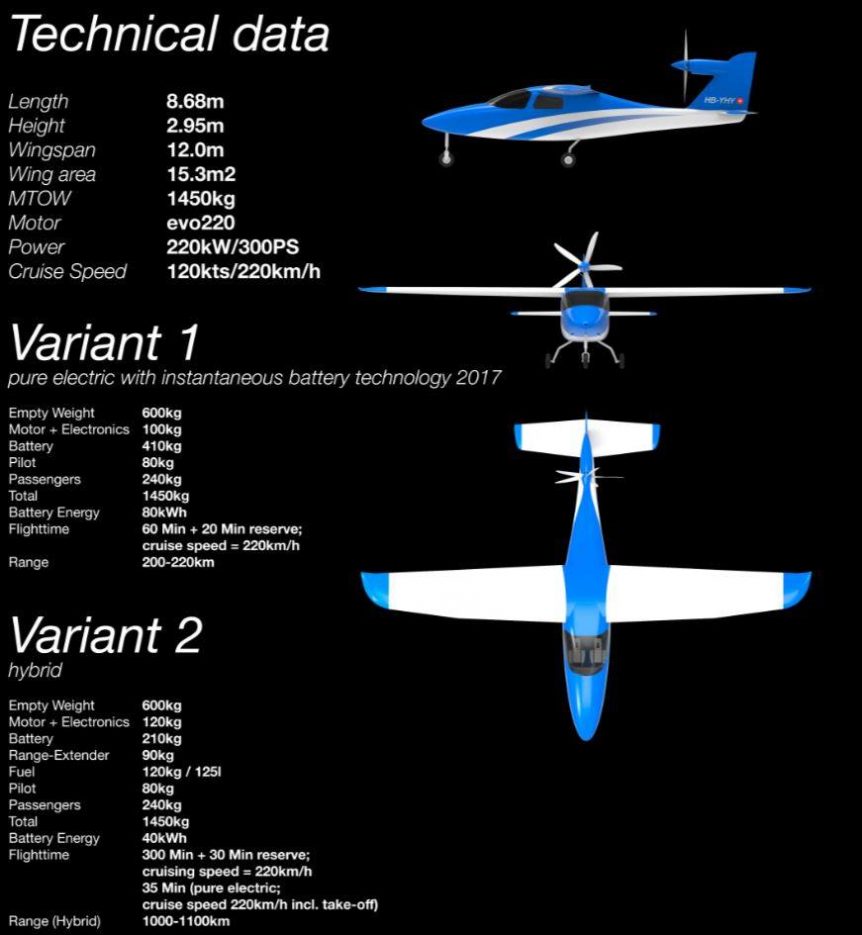Urs Villiger flew his Traveler TR230 four-seat touring craft about 10 years ago. He started revising the Cessna-like vehicle two years ago, turning it into a more aerodynamic and economical machine. His changes turned the Traveler into a hybrid aircraft and relocated the propeller to the vertical stabilizer. Reflecting professor Dipl.-Ing. Rudolf Voit-Nitschmann’s configurations he developed for Icare II and e-Genius, the low-drag placement of the drive motor near the top of the vertical fin confines the added drag caused by the propeller’s acceleration of air over the aircraft’s skin to the top-most part of the fin and rudder. Compare the area exposed to propeller blast to that of a conventional nose-mounted engine “tractor” type aircraft. On static display at this September’s Smart Flyer Challenge in Grenchen, Switzerland, the newly revised Traveler showed a streamlined nose fairing that holds a gas turbine (reported from a Panavia Tornado fighter’s auxiliary power unit (APU) attached to the UQM motor/generator. That unit charges …
SmartFlyer – an Electric Four-Seater?
The people behind the Smartflyer, a Swiss design concept now under development ask, “Why does the Smartflyer look like this? With a tail-mounted electric motor, it’s a bit reminiscent of e-Genius, and also a bit like a strutless Rutan Skigull. In fact, the basic configuration has been used on many significant aircraft over the last several decades, as a segment of Smartflyer’s web site shows. As Herr Professor Dipl-Ing. Rudolf Voit-Nitschmann, Project Leader on e-Genius explained, several benefits accrue from this arrangement of aerodynamic elements. Compared to a conventional touring motor glider a substantial larger propeller-diameter can be realized without a high and consequentially heavier undercarriage. Therefore the propeller-efficiency will increase. The front body part has the aerodynamic quality of a modern glider (no vorticities and local impact pressure peaks) and thus a very small drag. The propeller is optimally protected from ground contact. Electric motors are light enough to mount on a tail and are therefore able to benefit from that placement while …

